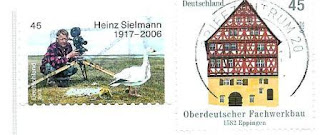Postcrossing anniversary was last month and the portuguese postcrossers celebrated in Setúbal. They had a birthday cake, fried cuttlefish (a regional speciality) and of course, postcards. I wasn't there but the dearest Vitória, Inês and Gracinha remembered me and sent me these beautiful postcards.
© Foto: C. Monteiro / © Casa dos Postais
The construction of Fort of São Filipe began during the Spanish occupation, in 1582, during the reign of Filipe I, as a way to reinforce Setúbal's defense against pirates, which, since the reign of D. Afonso IV, was a concern.
With the restoration of independence, in 1640, D. João IV ordered to expand the defenses and their adaptation to the use of artillery. In century XIX a fire destroyed the house of the command.
In the XX century, classified as National Monument, the General-Directions of National Buildings and Monuments, made restoration works and the fort was adapted to function as an hotel.
In the interior of the fort, besides the former governor's house, there is also a chapel totally covered in tiles.
Postais de Tróia
Located on a place of great natural beauty, the Tróia Peninsula is a strip of golden sand with about 17km long and 1,5km width, surrounded by a deep blue sea that make of this a privileged place for wonderful leisure moments.
The Tróia Beaches are famous for its peacefulness and great conditions offered to all visitors, and are usually beaches with big extensions that provide room and amenities for all.
Nowadays Tróia offers the most diversified amenities and services, among accommodation, restaurants, fun parks, tennis and golf courts, among many others. A profound urban and landscape remodelling is nowadays taking place, in order to reorganize the buildings and constructions that were made in the 1960’s and 70’s which were built for a massive tourism and that got into a degradation point. - in: https://www.guiadacidade.pt/en/poi-peninsula-de-troia-19706
Fotografia: João Dionísio
In the coastal region of Setubal we often observe specimens of the bottlenose dolphin (Tursiops truncatus), considered one of the faunistic symbols of the region.
The area between the Atlantic Coast ( Galé and Arrábida) and the Sado Estuary is home to one of only three mammals communities residing in the European maritime space.
Groups of these sociable animals, called "roazes", supposedly, from habit of gnaw the meshes that fishermen launch into the sea, seek daily the tide favorable to travel to the estuarine area, addressing themselves to areas of estuaries and marshes, in search of food, mainly cuttlefish, sea bass and mullet, in a consumption that can reach up to ten kilograms per day.





































